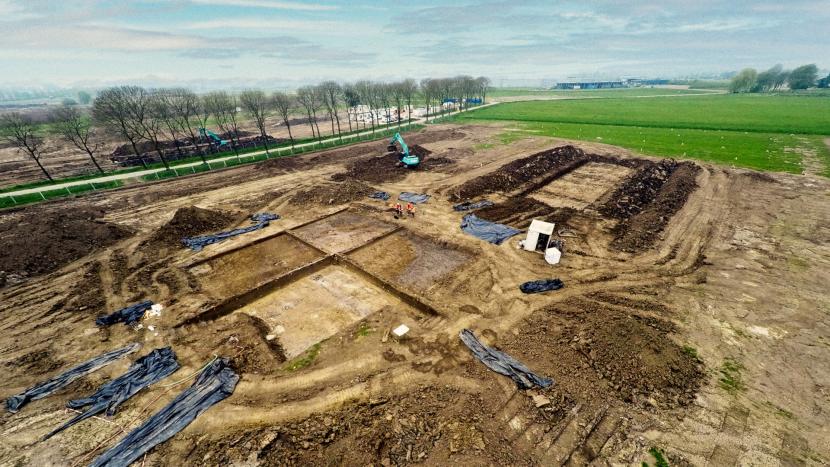The ritual site was once used to determine the longest and shortest days of the year
Christopher Parker
Daily Correspondent
June 26, 2023 5:24 p.m.
Archaeologists in the Netherlands have discovered a 4,000-year-old ritual site—and like Stonehenge in Britain, it was used to track the summer and winter solstices.
Stretching across more than nine acres (roughly seven American football fields), the site featured three mounds of soil, which formed pathways for sunlight to shine through on the longest and shortest days of the year. The mounds also held the remains of some 60 adults and children who lived between 2500 and 1200 B.C.E.
“The shrine must have been an important place,” say the researchers in a Google-translated statement from the Dutch municipality of Tiel. “People kept special days in the year, performed rituals and buried their dead.”

Archaeologists began work in the area starting in 2016, uncovering over a million artifacts. Gemeente Tiel
Unlike Stonehenge, however, no stone monuments remain at the newly discovered site. It was built with wood, which decomposed long ago.
“It is known that farmers have been concerned with the positions of the sun since the Stone Age,” Stijn Arnoldussen, a historian at the Netherlands’ University of Groningen, tells the Dutch broadcaster NOS, per Google Translate. “Yet such a complete, coherent landscape as has now been discovered is not often seen.”
More:
https://www.smithsonianmag.com/smart-news/dutch-stonehenge-solar-calendar-burial-ground-180982430/
 = new reply since forum marked as read
= new reply since forum marked as read
